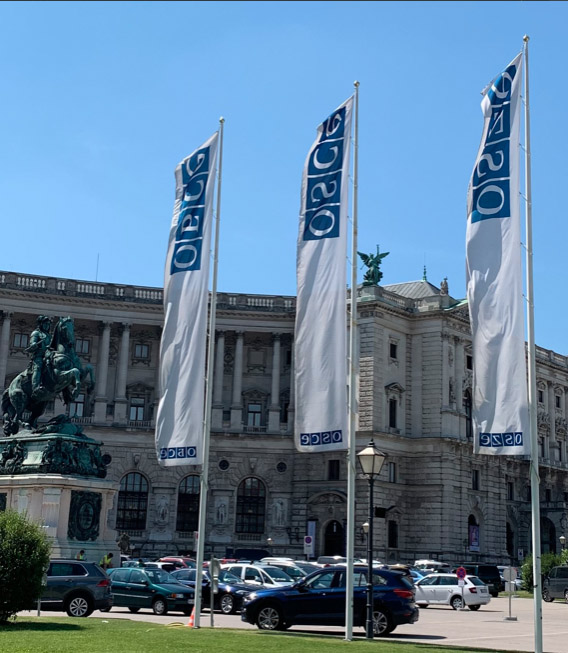Speech given by Dr. Sophie Roberts (COI Influence) at the ASRC Side Event Countering Hybrid Threats:
In a changing world of dynamic threats, we see a proliferation of actors, technologies, and vulnerabilities. This poses new challenges and requires us to think holistically about deterrence.
Key to this is the blend between resilience and imposition of cost. Deterrence has always been about finding out how our adversaries work and what makes them tick – different challengers have different interests, which we may need to hold at risk. We therefore need a combination of domestic readiness to show that attacks will be mitigated (plural media, good emergency response, a well-informed populace that knows what to do in a crisis), and the ability to hit back by raising cost. Conventional armed forces are one element of this, but so too are sanctions, public attribution, and increasingly public discussions of declared offensive cyber capability.
Strong cross government working is a critical enabler in bridging the gap between resilience and wider deterrence. This has second order effects outside of security. This can be improved through exercising, regular cross government meetings to promote information sharing and pooling.
We at the Centre think of modern deterrence in 8 areas:
Resilience. We want to show our resilience, to underline to an adversary that an attack is not likely to yield substantial or lasting benefit. To do so, we need to understand not just governmental but also societal and private sector weak points, and ensure we have protections or response plans in place.
But there are other areas which MUST supplement resilience in deterrence is to be effective.
Capabilities. We want to persuade an adversary that we have the covert, economic, military, trade, development or diplomatic capabilities to identify an attack and respond to it or impose cost.
Resolve. We want the adversary to believe that we have the political will to deny benefits and impose cost, even if it comes at a price to ourselves.
Attribution. We need to be able to identify quickly that a hybrid attack is happening and who is responsible – and persuade others of that. Adversaries are more likely to fear the imposition of costs if they believe that they will be detected and that the attribution of the attack will be broadly supported.
Solidarity. We will deter more effectively if we show our adversaries that we have partners who are ready to act with us, for example in imposing political, economic or other costs.
Agility. Adversaries may hope to achieve their aims by acting by surprise or developing new forms of attack. So we need to show that we are agile enough to respond to new challenges.
Coherence. We will most effectively deny benefit or impose cost if all aspects of government and society are co-ordinated. So we need: wide understanding across government and the private sector of the possible threats; effective ways to co-ordinate prevention and response activities; and strong common values shared across our societies and decision-makers.
Deterrence exists in the mind of the adversary, so we not only need to be strong in these areas, we also need to communicate our strengths effectively, whether overtly or covertly, publicly or privately.
In the multilateral space, there are more tools than ever, often created after international partners are moved to act in response to hostile behaviour. A quick look across the international system highlights new EU sanctions, the G7’s new Rapid Response Mechanism, the OPCW’s attribution function, the EU’s disinformation alert system, and frequent collective attributions in response to malign cyber activity. Recent and increased cross working between these institutions also increase the effectiveness of their deterrent actions.
The COE and other centres of expertise provide a corralling function to pool best-practice and insight on how best to deter. Learning to use these tools in an effective and proportionate way will complement the traditional deterrence of conventional and nuclear forces, demonstrating that hostile activities below the level of full-on conflict can still be met with a strong deterrent response.
Finally, as ever, we recognise the role for dialogue – off-ramps, transparency, and the avoidance of miscalculation are aided by reliable channels of communication. Deterrence messaging can also be passed in this way, setting out one actor’s sense of the threat posed by another and warning against activities that would be deemed provocative. OSCE discussions on threat perception and transparency are relevant here.
Thank you.


